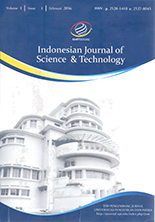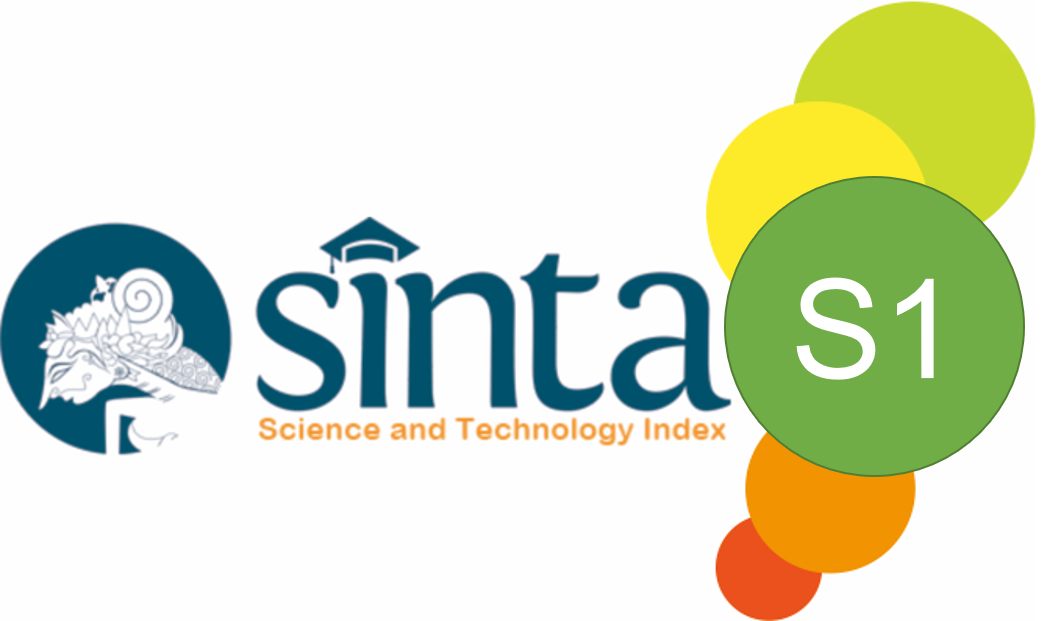Optimization by Artificial Neural Network (ANN) of Malachite Green Adsorption on Clays: Contribution to the Achievement of the Sustainable Development Goals (SDGs)
Abstract
This study focused on the adsorption of malachite green onto clays in aqueous solutions. The results were simulated using an artificial neural network (ANN). Materials were characterized using X-ray fluorescence spectrometry, Fourier transform infrared spectroscopy, X-ray diffraction, and nitrogen adsorption at 77 K. Sorption experiments were carried out in the discontinuous mode, examining the influences of contact time, adsorbent dose, solution pH, initial concentration, and temperature. The neural network topology was 4–10-1. The results predicted by this model show a good agreement with experimental data. The mathematical modelling of the obtained isotherms revealed that the Freundlich isotherm model is perfectly consistent with the experimental data. The thermodynamic parameters, such as the changes in Gibbs free energy, enthalpy, and entropy, are determined. The MG adsorption is physical, spontaneous, and exothermic for both adsorbents. This method, therefore, appears as an effective means to achieve the objectives of sustainable development of the United Nations.
Keywords
Full Text:
PDFReferences
Robinson, T., McMullan, G., Marchant, R. and Nigam, P. (2001). Remediation of dyes in textile effluent: a critical review on current treatment technologies with a proposed alternative. Bioresource Technology, 77(3), 247-255.
Rasalingam, S., Peng, P. and Koodali, R. T. (2015). An insight into the adsorption and photocatalytic degradation of rhodamine B in periodic mesoporous materials. Applied Catalysis B: Environmental, 174, 49-59.
Gao, Y., Guo, Y. and Zhang, H. (2016). Iron modified bentonite: Enhanced adsorption performance for organic pollutant and its regeneration by heterogeneous visible light photo-Fenton process at circumneutral pH. Journal of Hazardous Materials, 302, 105-113.
Youssef, E. E., Beshay, B. Y., Tonbol, K. and Sarah O. Makled, S. O. (2023). Biological activities and biosorption potential of red algae (Corallina officinalis) to remove toxic malachite green dye. Scientific Reports, 13(1), 13836.
Rezala, H., Romero, A. and Tidjani, N. (2025). Investigating the comparative adsorption of methyl orange and methyl green on commercial bentonite. Bulletin of the Chemical Society of Ethiopia, 39(4), 643-657.
Alardhi, S. M., Fiyadh, S. S, Salman, A. D. and Adelikhah, M. (2023). Prediction of methyl orange dye (MO) adsorption using activated carbon with an artificial neural network optimization modeling. Heliyon, 9(1), e12888.
Alardhi, S. M., Albayati, T. M., and Alrubaye, J. M. (2020). Adsorption of the methyl green dye pollutant from aqueous solution using mesoporous materials MCM-41 in a fixed-bed column. Heliyon, 6(1), e03253.
Lei, Y., Liu, X., Zhang, J., Dai, Z., Zhao, X. and Liu, G. (2023). A novel composite (ZIF-8@PEI-CC) with enhanced adsorption capacity and kinetics of methyl orange. Journal of Solid State Chemistry, 318, 123758.
Farghali, A. A., Bahgat, M., El Rouby, W. M. A. and Khedr, M. H. (2013). Preparation, decoration and characterization of graphene sheets for methyl green adsorption. Journal of Alloys and Compounds, 555, 193-200.
Perrotti, T.C., Freitas, N.S., Alzamora, M., Sánchez, D.R. and Carvalho, N.M.F. (2019). Green iron nanoparticles supported on amino-functionalized silica for removal of the dye methyl orange. Journal of Environmental Chemical Engineering, 7(4), 103237.
Naeem, A., Saeed, T., Sayed, M., Ahmad, B., Mahmood, T., Farooq, M. and Perveen, F. (2023). Chitosan decorated zirconium metal-organic framework for collaborative adsorption and photocatalytic degradation of methylene blue and methyl orange. Process Safety and Environmental Protection, 176, 115-130.
Ewis, D., Ba-Abbad, M. M., Benamor, A. and El-Naas, M. H. (2022). Adsorption of organic water pollutants by clays and clay minerals composites: A comprehensive review. Applied Clay Science, 229, 106686.
Isah B. A., Ponnuchamy, M., Senthil Rathi, B., Senthil Kumar, P., Kapoor, A., Rajagopal, M., Awasthi, A. and Rangasamy, G. (2024). Artificial intelligence-based neural network modeling of adsorptive removal of phenol from aquatic environment. Desalination and Water Treatment, 319, 100564.
Al-Musawi, T. J., Arghavan, S. M. A, Allahyari, E., Arghavan, F. S, Othmani, A and Nasseh, N. (2023). Adsorption of malachite green dye onto almond peel waste: a study focusing on application of the ANN approach for optimization of the effect of environmental parameters. Biomass Conversion and Biorefinery, 13, 12073–12084.
Wang, X., Liu, S., Chen, S., He, X., Duan, W., Wang, S., Zhao, J., Zhang, L., Chen, Q. and Xiong, C. (2024). Prediction of adsorption performance of ZIF-67 for malachite green based on artificial neural network using L-BFGS algorithm. Journal of Hazardous Materials, 473, 134629.
Parsazadeh, N., Yousefi, F., Ghaedi, M., Dashtian, K. and Borousan, F. (2018). Preparation and characterization of monoliths HKUST-1 MOF via straightway conversion of Cu(OH)2-based monoliths and its application for wastewater treatment: Artificial neural network and central composite design modeling. New Journal of Chemistry, 42(12), 10327-10336.
Khalaf, H., Bouras O. and Perrichon V. (1997). Synthesis and characterization of Al-pillared and cationic surfactant modified Al-pillared Algerian bentonite. Microporous Materials, 8(3-4), 141-150.
Qlihaa, A., Dhimni, S., Melrhaka, F., Hajjaji, N. and Srhiri, A. (2016). Physico-chemical characterization of a Morrocan clay. Journal of Materials and Environmental Science, 7, 1741-1750.
Al-Zubaidi, N. S., Alwasiti, A. A. and Mahmood, D.A. (2017). Comparison of nano bentonite and some nano chemical additives to improve drilling fluid using local clay and commercial bentonites. Egyptian Journal of Petroleum, 26(3), 811-818.
Kumar, A. and Lingfa, P. (2020). Sodium bentonite and kaolin clays: Comparative study on their FTIR, XRF, and XRD. Materials Today: Proceedings, 22(3), 737-742.
Wang, H. L., Gao Q. M. and Hu, J. (2009). High hydrogen storage capacity of porous carbons prepared by using activated carbon. Journal of the American Chemical Society, 131(20), 7016-7022.
Rezala, H., Douba, H., Boukhatem, H. and Romero, A. (2020). Adsorption of methylene blue by hydroxyl-aluminum pillared montmorillonite. Journal of The Chemical Society of Pakistan, 42(4), 550-563.
Rezala, H., Romero, A. and Tidjani, N. (2025). Investigating the comparative adsorption of methyl orange and methyl green on commercial bentonite. Bulletin of the Chemical Society of Ethiopia, 39(4), 643-657.
Brunauer, S., Deming, L. S., Deming W. E. and Teller, E. (1940). On a Theory of the van der Waals Adsorption of Gases. Journal of the American Chemical Society, 62(7), 1723-1732.
Sing, K. S. W., Everett, D. H., Haul, R. A. W., Moscou, L., Pierotti, R. A., Rouquerol J. and Siemieniewska, T. (1985). Reporting physisorption data for gas/solid systems with special reference to the determination of surface area and porosity. Pure and Applied Chemistry, 57(4), 603-619.
Bukka, K., Miller, J. D. and Shabtai, J. (1992). FTIR study of deuterated montmorillonite: Structural features relevant to pillared clay stability. Clays and Clay Minerals, 40(1), 92-102.
Elmoubarki, R., Mahjoubi, F. Z., Tounsadi, H., Moustadraf, J., Abdennouri, M., Zouhri, A., ElAlban A. and Barka, N. (2015). Adsorption of textile dyes on raw and decanted Moroccan clays: kinetics, equilibrium and thermodynamics. Water Resources and Industry, 9, 16-29.
Santos, S. C. R., Oliveira A. F. M and Boaventura, R. A. R. (2016). Bentonitic clay as adsorbent for the decolourisation of dye house effluents. Journal of Cleaner Production, 126, 667-676.
Al-Futaisi, A., Jamrah, A. and Ai-Hanai, R. (2007). Aspects of cationic dye molecule adsorption to palygorskite. Desalination, 214(1-3), 327-342.
Roulia, M.A. and Vassiliadis, A. (2008). Sorption characterization of a cationic dye retained by clays and perlite. Microporous and Mesoporous Materials, 116(1-3), 732-740.
Meskel, A. G., Kwikima, M. M., Meshesha, B. T., Habtu, N. G., Chinna Swami Naik, S. V. and Vellanki, B. P. (2024). Malachite green and methylene blue dye removal using modified bagasse fly ash: Adsorption optimization studies. Environmental Challenges, 14(5), 100829.
Somsiripan, T. and Sangwichien, C. (2023). Enhancement of adsorption capacity of Methylene blue, Malachite green, and Rhodamine B onto KOH activated carbon derived from oil palm empty fruit bunches. Arabian Journal of Chemistry, 16(12), 105270.
Jabar, J. M., Adebayo, M. A., Odusote, Y. A., Yılmaz, M. and Rangabhashiyam, S. (2023). Valorization of microwave-assisted H3PO4 activated plantain (Musa paradisiacal L) leaf biochar for malachite green sequestration: models and mechanism of adsorption. Results in Engineering, 18(5), 101129.
Langmuir, I. (1916). The constitution and fundamental properties of solids and liquids. Journal of the American Chemical Society, 38, 2221-2295.
Freundlich, H. M. F. (1906). Uber die adsorption in Losungen. Zeitschrift fur Physikalische Chemie, 57, 385–470.
Temkin, M. J. and Pyzhev, V. (1940). Recent modifications to Langmuir isotherms. Acta Physicochimica U.R.S.S, 12, 217-225.
Amin, M.T., Alazba A.A. and Shafiq, M. (2015). Adsorptive removal of reactive black 5 from wastewater using bentonite clay: Isotherms, kinetics and thermodynamics. Sustainability, 7(11), 15302-15318.
Boukhatem, H., Ouazene, N., Rezala, H., Djouadi, L., Selami, S. and Zeraif, S. (2023). Removal of methylene blue dye from aqueous media by adsorption using nickel oxide modified montmorillonite composite. Indian Journal of Chemical Technology, 30(6), 812-821.
Bessaha, F., Marouf-Khelifa, K., Batonneau-Gener, I. and Khelifa, A. (2016). Characterization and application of heat-treated and acid-leached halloysites in the removal of malachite green: adsorption, desorption, and regeneration studies. Desalination and Water Treatment, 57(31), 14609–14621.
DOI: https://doi.org/10.17509/ijost.v11i1.87371
Refbacks
- There are currently no refbacks.
Copyright (c) 2025 Universitas Pendidikan Indonesia

This work is licensed under a Creative Commons Attribution-ShareAlike 4.0 International License.
Indonesian Journal of Science and Technology is published by UPI.
View My Stats





















